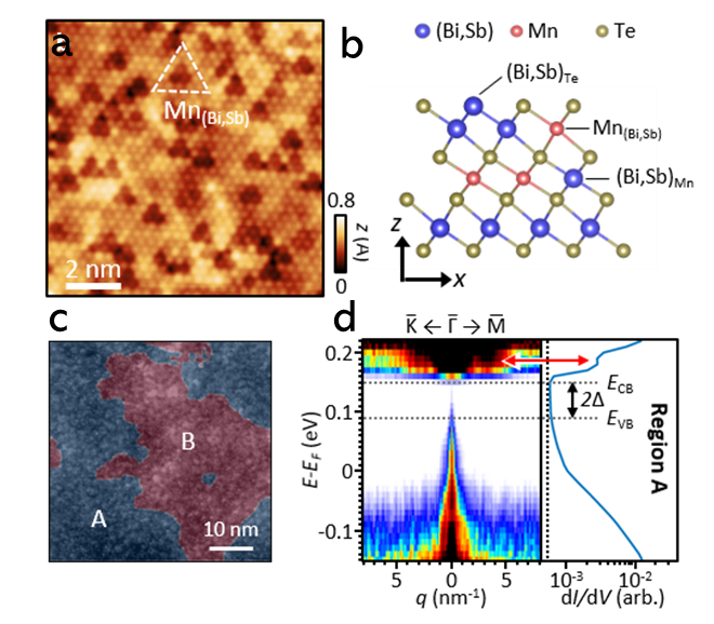
(a) STM images showing atomic defects. (b) Atomic models of defects in MBST. (c) Areas that are more electron-doped (region A) and hole-doped (region B) superimposed on the topography. (d) Quasiparticle dispersions and average STS spectra of regions A, indicating the surface state gap, a key to exotic quantum phenomena
Scientific Achievement
The effects of nanoscale disorder on local electronic properties of the compensated topological magnet, MnBi2-xSbxTe4 (MBST), are quantified for the first time.
Significance and Impact
Local (Bi,Sb)Mn anti-site defects are found to be the main source of doping fluctuations and are responsible for a vanishing transport gap in the MBST that is a promising host for exotic quantum phenomena
Research Details
- The quasiparticle interference (QPI) method of scanning tunneling microscopy (STM) was used to map nanoscale fluctuations in the local band gap and doping level.
- Statistical analysis was applied to fully disentangle the roles of the individual types of defects on electronic property fluctuations.
F. Lüpke, et al., Communications Materials 4, 82 (2023). DOI: 10.1038/s43246-023-00408-w
Work performed at the Center for Nanophase Materials Sciences


